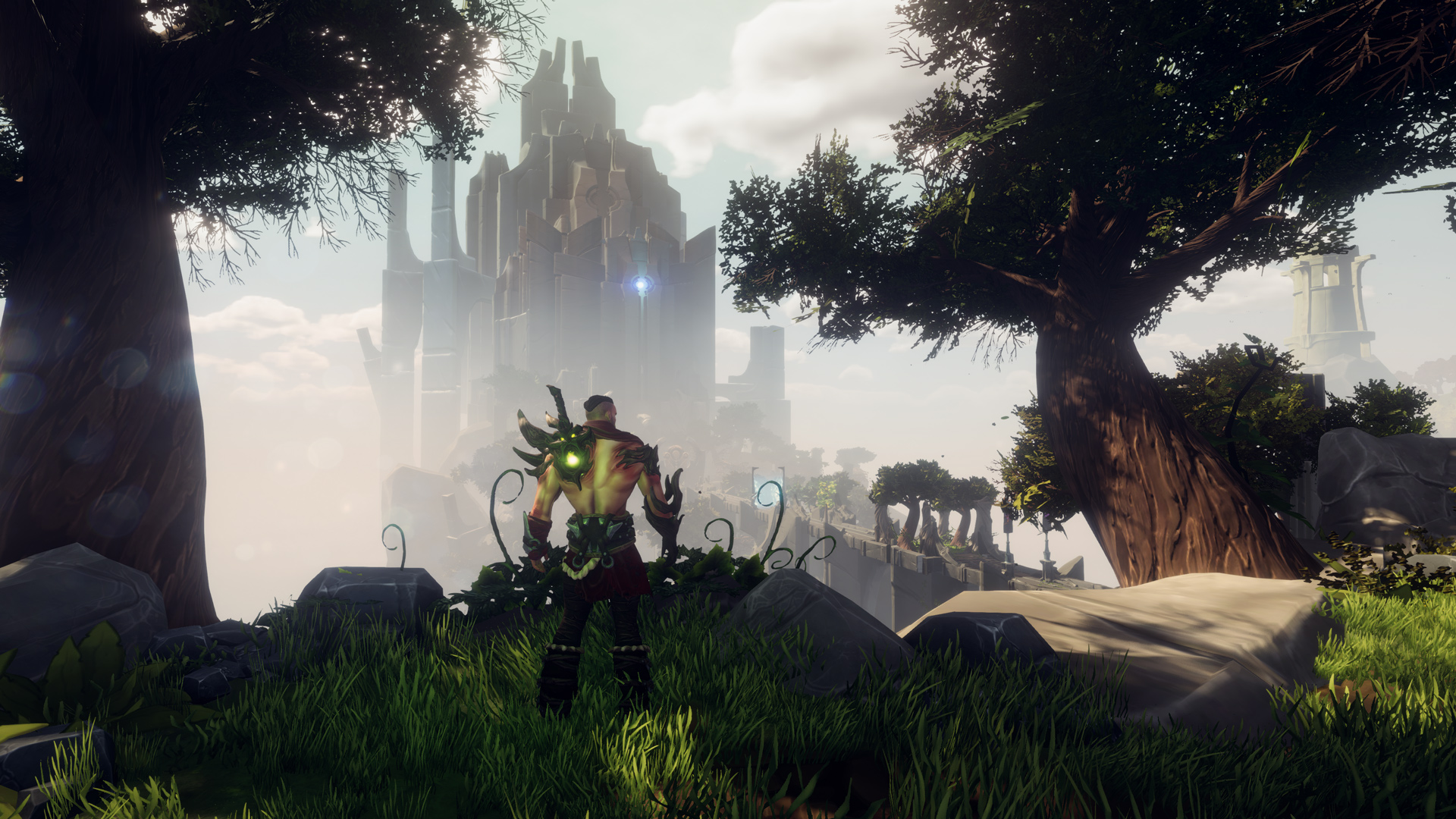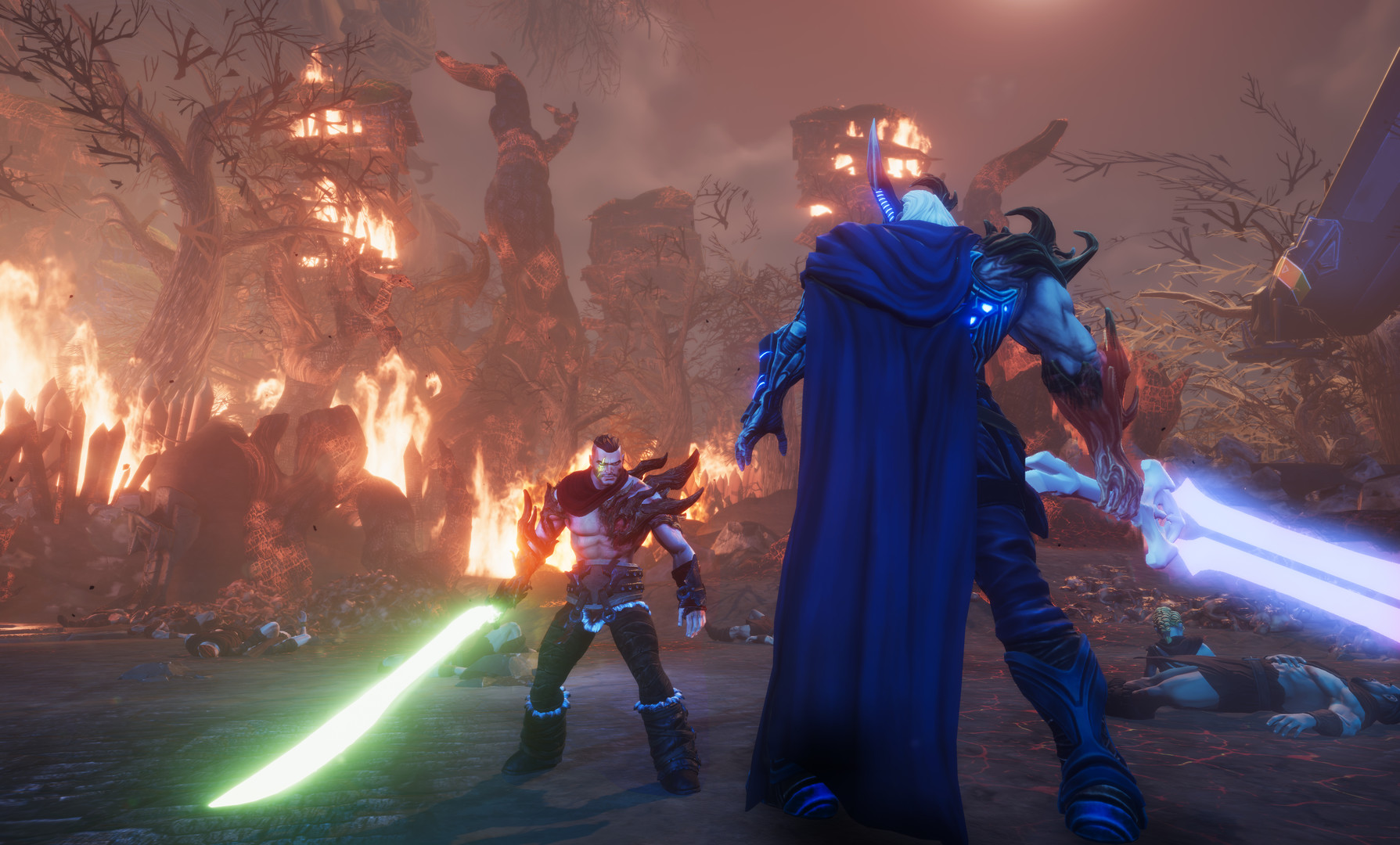Warlander Review
War(lander), huh, good god

Weighty and committed combat is on the rise. There have been lots of games that ask you to really mean the attacks that you make, to commit to them like you would a marriage, to follow through with them as if you were trying to punch throw a building, but without the risk of shattering your hand. It’s the kind of thing that makes combat feel more strategic, each move feels valuable, and each mistake is yours to own and learn from.
The value of mistakes can never be underestimated, and it’s something that lots of games want you to understand. Sure, it’s just a game, but you can still learn a lot by analysing the things that didn’t go so well, as well as celebrating your victories. There are a few genres where this all collides, and one of those is the action-roguelike. The combination of heavy combat and the constant fear of failure make for a heady and intoxicating mixture, one that is as sure to ensnare you as it is to leave others with horrific hangovers. Warlander is an action-roguelike, and it very much attempts to embody all of these ideas in every aspect of its design.
You play as Bruce (not the shark from Finding Nemo), a man with no memory, a magical talking sword, and a thirst for vengeance. You have to carve your way through a dark fantasy one room at a time. You see, the game has you choose your own path through it, meaning you can see the challenges you’ll be facing ahead of time, and it’s your job to decide if you want to have a fight next and help improve your abilities, or if you want to visit a shop, or unlock a chest. That’s not what makes Warlander special though; it’s just one aspect of the game.
Off with their heads

What makes Warlander special, is the combat. You’ve probably already cottoned onto the fact that the combat is very well weighted and that you won’t be button-mashing here. It goes a step beyond many other games though and seems to take inspiration from Metal Gear Rising: Revengeance, in that you can see where your strikes will hit, and you need to aim well if you want to take out the various monsters you’ll be fighting against.
That means angling up to take off an enemies head or looking down to cut off their ankles and leave them open for a finishing move. Of course, the whole point of this system is to allow for a more granular approach to difficulty in combat, because if an enemy has armour on their head, then you can’t score a decapitation and if it’s on their legs, then you’d best aim for their torso. It makes every hit count, and every missed strike or deflected blow almost physically painful.
On top of that, you unlock new abilities by spending experience points and specific kinds of dismemberment, which means you might find yourself specifically aiming to make enemies armless if you want to grab the next upgrade. The skills all unlock new possibilities in combat, like grabbing an enemy with a vine before yeeting them into an explosive barrel or throwing your sword through a whole line of enemies who have lovingly stood behind one another for you.
Tis but a scratch

It’s a good combat system, it feels robust, although it does sometimes feel as though enemies don’t always take advantage of it. The early levels in each run are a breeze, with even the first boss being easily dispatched if you’re used to this kind of combat. That’s not a bad thing as such; I just expect to die much earlier in my roguelike runs for the most part. Of course, the difficulty takes the steps up two at a time as you progress through the world, so you’ll likely die a fair few times before making it to the end boss for the first time.
The enemy variety isn’t great initially either, with their only really being a couple of different varieties until you’ve defeated your first boss. It’s a bit of a shame that you don’t see more in the early stages of the runs, and while I appreciate it’s probably to encourage you by making you succeed in the first few fights, it does feel a little more bare-bones as a result. Things do get better later on though; nothing says variety like getting kicked off of a bridge or mauled by a war hound.
Overall, Warlander is a lot of fun, and the combat system really is unlike anything else you’re likely to have played. While it doesn’t always shine in each individual fight, it does a good job of escalating as you play through it, and the difficulty curve straddles the line between forgiving and “oh lord why is this happening to me” very well. It’s certainly worth your attention if you’re looking for something visceral to sink your teeth into, and it’ll treat you well if you’re willing to master the nuances of the combat system too.
[Reviewed on PC]

